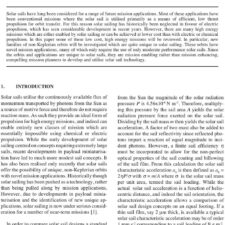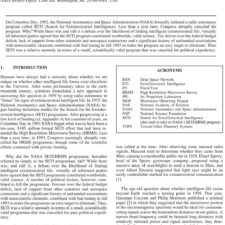Morphological Control: A Design Principal for Applications in Space Science
£5.00
R. M. Füchslin et al. (2014), JBIS, 67, pp.305-313
Refcode: 2014.67.305
Keywords: Morphological control, Morphological computation, Soft robots, Tensairity, Space flight
Abstract:
Designing robots for applications in space flight requires a different prioritization of design criteria than for systems operating on Earth. In this article, we argue that the field of soft robotics offers novel approaches meeting the specific requirements of space flight. We present one especially promising construction principle, so called Tensairity, in some detail. Tensairity, as the name suggests, takes ideas from Tensegrity, but uses inflatable structures instead of cables and struts. Soft robots pose substantial challenges with respect to control. One way to meet these challenges is given by the concept of morphological computation and control. Morphological computation can be loosely defined as the exploitation of the shape, material properties, and dynamics of a physical system to improve the efficiency of computation and to deal with systems for which it is difficult to construct a virtual representation using a kinematic model. We discuss fundamental aspects of morphological control and their relevance for space flight. Besides low weight, small consumption of space in the inactive state and advantageous properties with respect to intrinsic safety and energy consumption, we discuss how the blurring of the discrimination of hard- and software leads to control strategies that require only very little and very simple electronic circuitry (which is beneficial in an environment with high irradiation). Finally, we present a research strategy that bundles activities in space flight with research and development in medicine, especially for support systems for an aging population, that are faced with similar morphological computing challenges to astronauts. Such a combination meets the demands for research that is not only effective, but also efficient with respect to economic resources.





